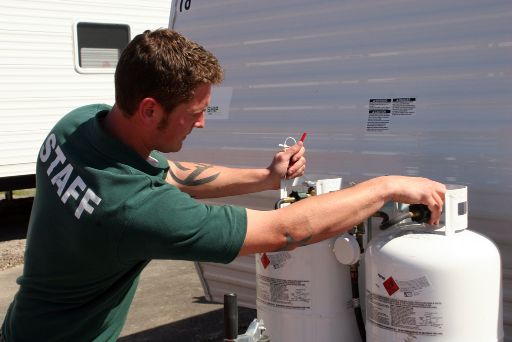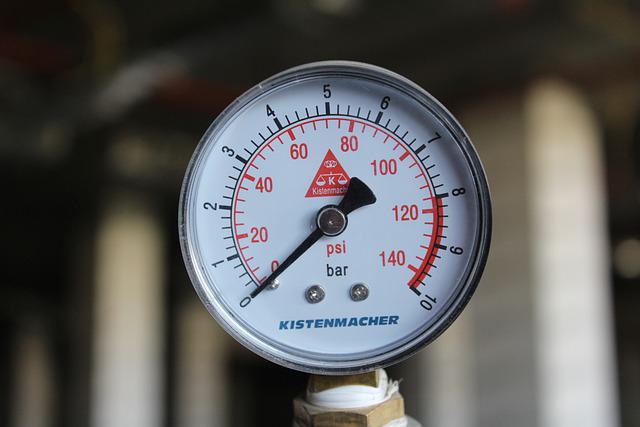
Are you a homeowner or business owner who needs to remove a propane tank from your property? Do you want to ensure that the process is safe, compliant with regulations, and completed efficiently? If so, then you have come to the right place.
Propane tank removal is a complex process that requires specialized knowledge and equipment, as well as compliance with legal and regulatory requirements.
However, with the help of this comprehensive guide, you can navigate the process with confidence, knowing that you have the information and resources you need to make informed decisions.
In this article, we will cover everything from the types of propane tanks and reasons for removal to finding qualified professionals and preparing for the removal process. We will also discuss legal and regulatory considerations, post-removal considerations, and cost factors to help you budget accordingly.
By the end of this article, you will have a thorough understanding of how to request propane tank removal and can move forward with confidence, knowing that you have taken the necessary steps to protect your property and the environment.
Types of Propane Tanks
Residential and commercial propane tanks come in a variety of sizes and configurations, depending on the specific needs of the property. In residential settings, above-ground and underground tanks are common. Above-ground tanks are typically easier to remove, as they are more accessible and do not require excavation. Underground tanks, on the other hand, can be more challenging to remove due to the need for excavation and potential damage to landscaping or property structures.
Commercial propane tanks can be larger and more complex than residential tanks, often requiring specialized equipment and expertise for removal. Regardless of the type of tank being removed, the process should always be carried out by professionals with the necessary skills, knowledge, and equipment to ensure a safe and efficient removal.
Reasons for Propane Tank Removal
There are several reasons why a property owner might need to request propane tank removal. One of the most common reasons is the age and deterioration of the tank itself. Over time, tanks can develop leaks or other issues that pose a safety hazard, making removal necessary. In some cases, property owners may decide to switch to an alternative energy source, such as solar, geothermal, or electric, and will need to remove the propane tank as part of the transition.
Another reason for propane tank removal is upgrading to a larger tank to accommodate increased energy needs. This is particularly common in commercial settings where businesses expand or add new equipment that requires additional fuel capacity. Finally, property sale or renovation may necessitate the removal of a propane tank to comply with local regulations or to make way for new construction or improvements.
Legal and Regulatory Considerations
Properly removing a propane tank is not just a matter of safety; it is also a matter of complying with federal, state, and local regulations. The Environmental Protection Agency (EPA) and the Department of Transportation (DOT) have established guidelines and requirements for the removal, transportation, and disposal of propane tanks, which must be followed to avoid fines and legal penalties. Additionally, some states and municipalities have their own regulations and ordinances governing propane tank removal, including permits and inspections that must be obtained and completed before the removal process can begin.
Environmental protection is also a critical consideration when removing propane tanks, as improper removal can lead to soil or water contamination, posing a risk to both human health and the environment. By adhering to established regulations and working with qualified professionals, property owners can ensure that their propane tank removal process is both safe and compliant.
Finding a Qualified Propane Tank Removal Company
Given the potential hazards and legal requirements associated with propane tank removal, it is crucial to hire a qualified and experienced company to handle the job. There are several steps that property owners can take to find and evaluate potential removal companies.
One of the most effective ways to find a reputable company is through online research, including reviews and testimonials from previous clients. Additionally, asking for referrals from friends, neighbors, or other businesses who have had propane tanks removed can be a helpful way to identify local professionals with a proven track record.
Licensing and insurance are also essential factors to consider when hiring a propane tank removal company. Property owners should make sure that the company they hire holds the necessary licenses and permits to perform propane tank removal in their area. They should also verify that the company has adequate insurance coverage to protect against any accidents or damage that may occur during the removal process.
Preparation for Propane Tank Removal
Once a qualified propane tank removal company has been selected, property owners can take several steps to prepare for the removal process. Communication with the removal company is critical to ensure that everyone is on the same page regarding the scope of the job and any necessary preparations. Property owners should be clear about the location of the tank, its size and condition, and any access or safety concerns that may need to be addressed.
Ensuring safe access to the tank is also essential, as the removal process may require heavy equipment and specialized tools. Property owners should clear any debris or obstacles from the area around the tank, ensuring that the removal team has adequate space to work safely. If the tank is located underground, excavation may be necessary, and property owners should ensure that any buried utilities or structures are marked to avoid damage.
Disconnecting and emptying the propane tank is another crucial step in preparing for removal. This may involve shutting off the gas supply, draining the tank, and purging it of any remaining gas. Property owners should consult with the removal company for specific instructions regarding the proper procedures for emptying and preparing the tank for removal.
Notification of neighbors and local authorities may also be necessary, particularly if the removal process may impact other properties or public areas. Property owners should check with their local government to determine if any permits or notifications are required before beginning the removal process.
The Removal Process
The removal process itself typically involves several steps, including inspection and assessment, excavation (if necessary), tank purging and cleaning, cutting, lifting, and transport. A qualified propane tank removal company will follow established protocols and use specialized equipment to ensure that the process is both safe and efficient.
Inspection and assessment involve evaluating the tank and surrounding area for any potential hazards or obstacles that may need to be addressed before removal can begin. This may include checking for leaks or damage, identifying any buried utilities or structures, and assessing the condition of the tank itself.
Excavation, if necessary, may involve digging a hole around the tank to provide access for removal equipment. Property owners should be prepared for potential damage to landscaping or other property structures that may be required to complete the excavation process.
Purging and cleaning the tank is critical to ensure that any remaining gas or debris is removed before cutting or lifting the tank. A professional propane tank removal company will use specialized equipment and techniques to safely and efficiently empty and clean the tank.
Cutting, lifting, and transport involve physically separating the tank from any attached pipes or equipment and lifting it onto a trailer or truck for transport. This may involve using cutting tools or a crane to lift and maneuver the tank into position for removal.
Documentation and disposal are the final steps in the propane tank removal process. Property owners should ensure that they receive all necessary documentation from the removal company, including any permits, licenses, or disposal records. The removed tank will typically be transported to a specialized facility for disposal, where it will be recycled or processed in accordance with established environmental regulations.
Post-Removal Considerations
After the propane tank has been removed, property owners may need to take several steps to restore the site to its previous condition. This may involve filling any excavated areas, replacing landscaping or structures, or installing a new energy source. Depending on the reason for the removal, property owners may choose to convert to an alternative energy source, such as solar or geothermal, or install a new propane tank to meet their energy needs.
Cost Factors and Budgeting
The cost of propane tank removal can vary widely depending on factors such as the size of the tank, the location of the tank, the complexity of the removal process, and local labor and disposal costs. Property owners should obtain quotes from multiple propane tank removal companies and compare them carefully, considering not only the total cost but also the quality of the services provided.
Financial assistance programs and tax incentives may also be available to help offset the cost of propane tank removal or the installation of a new energy source. Property owners should check with their local government or utility provider to determine if any such programs are available in their area.
Conclusion
Propane tank removal is a complex process that requires specialized knowledge, equipment, and regulatory compliance. Property owners who are considering removing a propane tank should carefully evaluate their options, including the reasons for removal, the qualifications of potential removal companies, and the cost and regulatory requirements of the process. By taking the necessary precautions and working with qualified professionals, property owners can ensure a safe and efficient removal process that protects both their property and the environment.

Mike is an experienced propane technician with over 15 years of professional experience in the field. He has dedicated his career to helping customers with their propane needs, from installation to maintenance and repair. Together with Jeremy, he co-founded this website to provide useful information and guidance to customers seeking reliable propane services.




